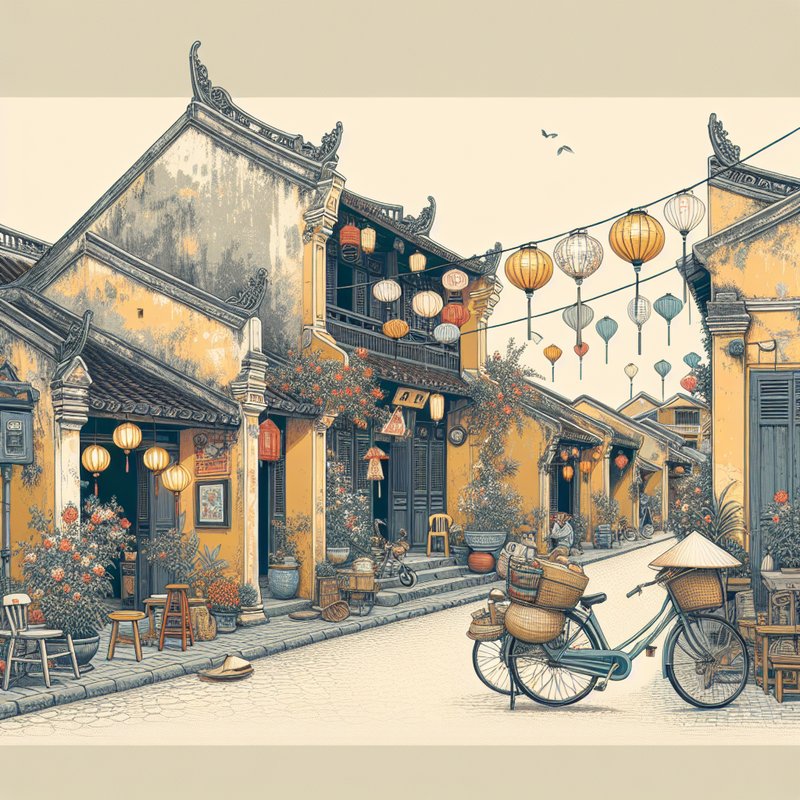The Historical Significance of Hội An

Hội An’s history dates back to the Champa Kingdom and its prominence as a major trading port in Southeast Asia from the 15th to 19th centuries. Its unique cultural blend is a result of maritime trade, reflected in the architecture, customs, and local traditions.
Walkthrough the ancient streets of Hội An and explore its well-preserved historical sites, such as the Japanese Covered Bridge and traditional merchant houses. Each structure tells a story of Hội An’s trading past and cultural integration.
Architectural Marvels of Hội An

Hội An is renowned for its diverse architectural styles, including Vietnamese, Chinese, Japanese, and colonial influences. The Old Town is a living museum where ancient wooden houses stand alongside French colonial buildings.
Visit iconic landmarks such as the Assembly Hall of the Fujian Chinese Congregation and the Old House of Tan Ky to appreciate the intricate designs and historical significance. These structures showcase the craftsmanship and cultural heritage of the town’s diverse communities.
Cultural Festivals and Traditions

Hội An’s cultural calendar is filled with vibrant festivals that reflect its rich heritage. The Lantern Festival, held on the 14th day of each lunar month, transforms the town with colorful lanterns and traditional performances.
Participate in other local traditions, such as the Mid-Autumn Festival and Tet (Vietnamese New Year), to experience the communal spirit and cultural richness of Hội An. These events offer insight into the town’s customs, beliefs, and way of life.
A Culinary Tour of Hội An

Hội An is a food lover’s paradise, offering a variety of delicious local dishes. From the famous Cao Lau noodles to the flavorful Banh Mi, the town’s cuisine is a testament to its diverse cultural influences.
Join a cooking class or food tour to learn about the ingredients and techniques used in traditional Hội An dishes. This hands-on experience provides a deeper understanding of the town’s culinary heritage and its role in local culture.

Leave a Reply